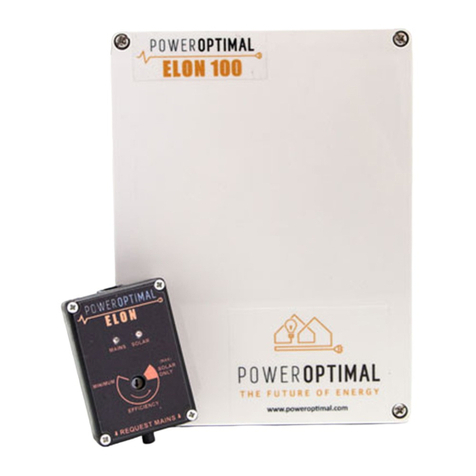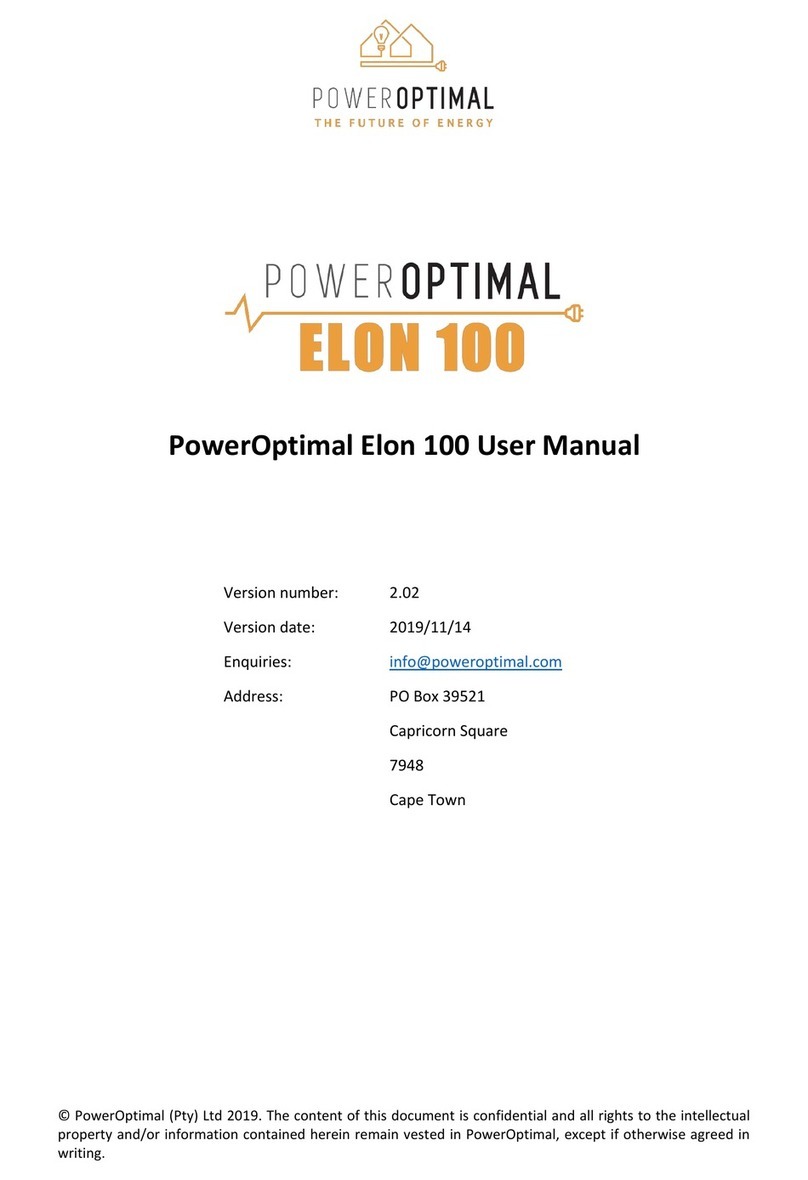© PowerOptimal (Pty) Ltd 2019. The content of this document is confidential and all rights to the intellectual
property and/or information contained herein remain vested in PowerOptimal, except if otherwise agreed in
writing.
Table of Contents
Table of Contents....................................................................................................................................4
1. Introduction ........................................................................................................................................5
1.1 System overview...........................................................................................................................5
1.2 Main system components.............................................................................................................6
1.3 Deciding on size of Elon system (basic guide)...............................................................................6
2. Operation............................................................................................................................................7
2.1 Elon 100 controller........................................................................................................................7
2.2 Mains / solar indicator lights ........................................................................................................7
2.3 Efficiency dial ................................................................................................................................8
2.4 Override button ............................................................................................................................9
2.5 Controller settings for switching off solar or grid power to electric geyser.................................9
2.6 How to maximise your savings....................................................................................................10
3. Maintenance.....................................................................................................................................12
3.1 Solar PV module maintenance....................................................................................................12
4. What to expect in terms of performance .........................................................................................13
4.1 Hot water production .................................................................................................................13
4.2 Impact of location and seasons ..................................................................................................14
4.3 Payback period............................................................................................................................15
5. Troubleshooting................................................................................................................................16
Appendix A. IEC/SANS Test Certificate: Elon 100 .................................................................................18
Appendix B. Warranty...........................................................................................................................19
Appendix C. Terminology......................................................................................................................20
Notes.....................................................................................................................................................21






























